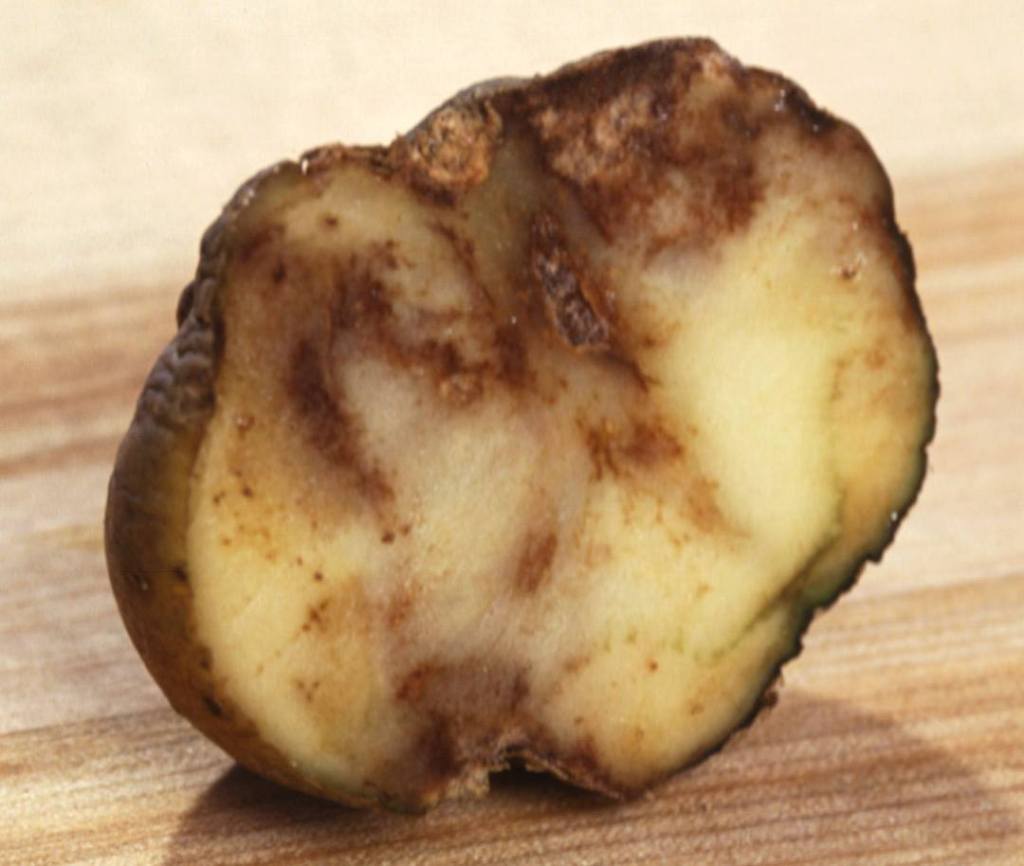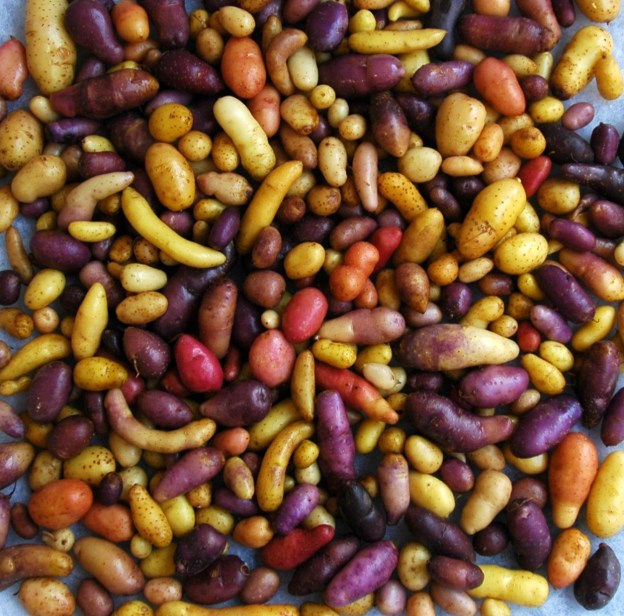Potatoes are already a staple for 1.3 billion people… but unlike other major crops, however, the potato has not had a breeding breakthrough of the kind that helped dramatically boost yields during the Green Revolution of the 1950s and 1960s. The reason is that creating a new potato variety is slow and difficult, even by the patient standards of plant breeders…Readying a new potato variety for farm fields can take a decade or more. Many countries continue to plant popular potato varieties that have remained essentially unchanged for decades. But new approaches, including genetic engineering, promise to add more options. Potato breeders are particularly excited about a radical new way of creating better varieties. This system, called hybrid diploid breeding, could cut the time required by more than half, make it easier to combine traits in one variety, and allow farmers to plant seeds instead of bulky chunks of tuber.

To breed a better potato, it helps to have plenty of genetic raw material on hand. But the world’s gene banks aren’t fully stocked with the richest source of valuable genes: the 107 potato species that grow in the wild. Habitat loss threatens many populations of those plants. In a bid to preserve that wild diversity before it vanishes, collectors have made their biggest push ever, part of a $50 million program coordinated by the Crop Trust, an intergovernmental organization based in Bonn, Germany.
The Crop Trust has provided grants and training to collectors around the world. The effort on wild potatoes, which wraps up this month, has yielded a collection representing 39 species from six nations: Peru, Brazil, Ecuador, Guatemala, Costa Rica, and Chile. Zorrilla’s team alone found 31 species in Peru, including one for which no seeds had ever been collected. They plan to continue to search for four other species still missing from gene banks. “We will not stop,” she says. The plants are being stored in each nation’s gene bank, CIP, and the Millennium Seed Bank at the Royal Botanic Gardens, Kew, in the United Kingdom. The stored seeds will be available to potato breeders worldwide.
THE HARDEST PART comes next: getting desirable genes from wild species into cultivated potatoes….Other researchers are skirting the limitations of traditional breeding by using genetic engineering. CIP’s Marc Ghislain and colleagues, for example, have directly added genes to already successful potato varieties without altering the plants in any other way—an approach not possible with traditional breeding. They took three genes for resistance to late blight from wild relatives and added them to varieties of potato popular in East Africa.

The engineered varieties have proved successful in 3 years of field tests in Uganda and are undergoing final studies for regulators. Transgenic potatoes that resist late blight have already been commercialized in the United States and Canada….
Pim Lindhout has been plotting a revolution that would do away with much of that tedium and complexity. As head of R&D for Solynta, a startup company founded in 2006, he and his colleagues have been developing a new way to breed potatoes….Breeders reduce the complexity either by using species with only two sets of chromosomes (known as diploids) or by manipulating domesticated potatoes to cut the number of chromosomes in half. With persistence, diploid potatoes can be inbred. In 2011, Lindhout published the first report of inbred diploid lines that are vigorous and productive. More recently, Jansky and colleagues also created inbred diploid lines.
Such diploid inbred plants are at the heart of Solynta’s strategy to revolutionize potato breeding. Other firms, including large seed companies, are also working to develop hybrid potatoes. HZPC in Joure, the Netherlands, has begun field trials in Tanzania and in several countries in Asia.
Excerpt from Erik Stokstad, The new potato, Science, Feb. 8, 2019
